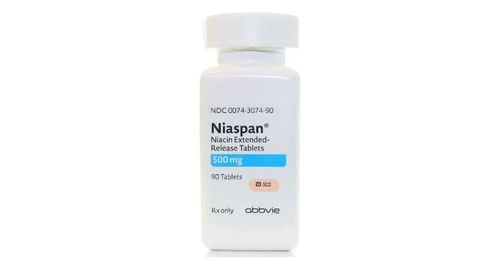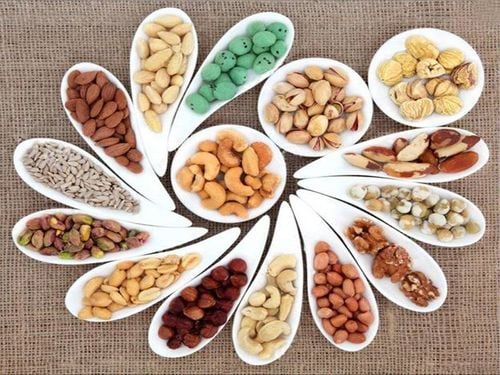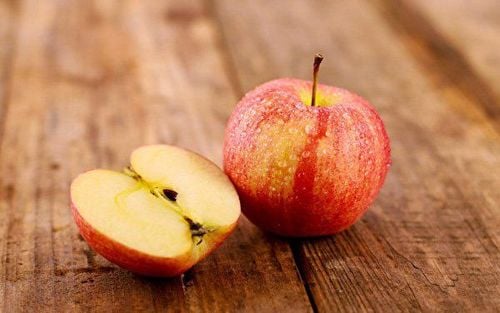This is an automatically translated article.
Food preservation and food protection both have a common purpose of preventing food from being contaminated with bacteria, spreading disease and spoiling. However, researchers show that many of the methods of food protection and preservation used today have ancient origins. So what is the scientific way to preserve food for the longest time?
1. Importance of food preservation
Food stored for a long time is at risk of spoilage due to pathogenic bacteria such as E.coli , Salmonella and other pathogens. Bacteria only need warmth, moisture and time to rapidly multiply in food, but preserving food will inhibit one or more of these conditions and prevent their growth. In many cases of mild spoilage, it is still edible but will significantly affect taste, texture and appearance. Proper food storage can help keep food fresh and retain the nutritional value of some foods.
Buying a lot of food will waste food, costing a lot for both your family and society. You should avoid buying more than you can use, but different storage methods if done properly will help you keep vegetables, fruits, meats, and more. It is not past its normal use-by date, so it does not need to be thrown in the trash.
Some food preservation methods can be complicated, but you will most likely feel real satisfaction and pride when successfully applied. In addition, because many preservation methods require precision and care to maintain food safety, you will strengthen your awareness of food hygiene hazards and good practices.
2. Some scientific tips to help preserve the freshest food for the longest time
2.1. Ancient Methods Age-old food preservation techniques include drying, smoking, freezing, refrigeration, fermentation, salting, pickling, and canning.
2.1.1. Drying and smoking One of the oldest methods of food preservation is sun drying or air drying. Drying is a form of water removal from food. Without enough water, microorganisms cannot multiply and chemical activities slow down greatly. Dried meat was one of the earliest staple foods of hunters and nomads (who were constantly on the move). When fire was discovered, prehistoric cave dwellers dried meat and fish with heat, which may have led to the development of smoking as another way to preserve these foods. The Phoenicians of the Middle East dried fish. The ancient Egyptians stocked up on dry grains. The Native Americans of North America produced a nutritious food called pemmican by grinding dried meat, dried fruit, and fat.
Today, a variety of dehydration techniques are known and used. The specific technique to be applied depends on the characteristics of the food being preserved. For example, a traditional method of preserving rice is to let it dry naturally in the field or on a drying rack in a warehouse for about two weeks. After this period, the rice is threshed and sun-dried until the husk is dry. Modern drying techniques utilize fans and heaters in a controlled environment. These methods avoid the uncertainties that arise when field crops are left to dry out under natural conditions. Temperature-controlled air-drying is especially popular for preserving spoiled grains, corn, barley, and bulgur.
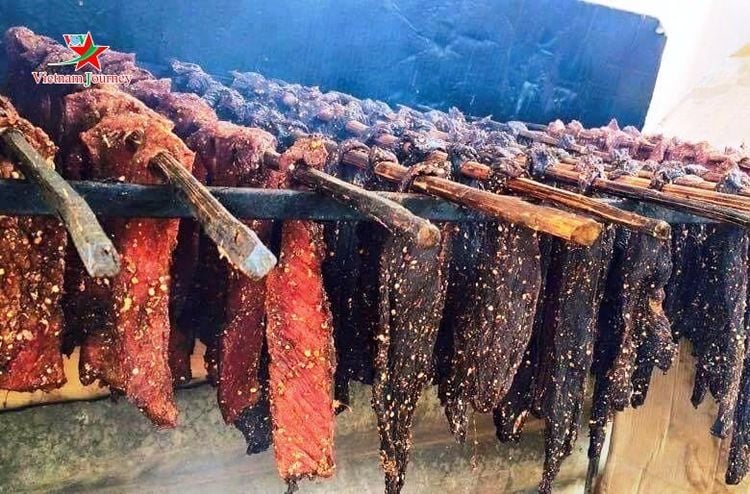
Phương pháp sấy khô và hun khói ngày nay vẫn được sử dụng
Several factors are involved in choosing the best approach to freezing food, including the temperature used, the speed at which freezing takes place, and the actual method used to freeze the food. Because of differences in cellular composition, foods actually begin to freeze at temperatures ranging from about -0.6°C for some fish to -7°C for some fruits. .
The speed at which food is frozen is also a factor, mainly for aesthetic reasons. The slower the food is frozen, the larger the ice crystals that are formed. Large ice crystals tend to rupture cells and destroy the texture of meat, fish, vegetables and fruit. To solve this problem, rapid freezing technique has been developed. In quick freezing, food is cooled to freezing point as quickly as possible. As a result, the product obtained when thawed tends to have a firmer, more natural texture than is the case with most slow-frozen foods.
As most methods of preserving frozen foods work better with some foods than others. Fish, meat, poultry, and citrus juices (such as frozen orange juice concentrate) are some of the most commonly preserved foods using this method. Ideal refrigeration temperature between 1°C and 4°C, ideal freezing temperature between -18°C and - 22°C
2.1.3. Fermentation is a naturally occurring chemical reaction in which natural foods are transformed by pathogens into another form. In this method, the food is damaged but an edible product is formed.
The best example of such a food is cheese. Raw milk is not edible for a very long time. The pH is such that harmful pathogens begin to grow in it very quickly. However, early humans discovered that the spoilage of milk could be controlled in a way to create a new product, cheese.
Bread is another food product created by fermentation. Flour, water, sugar, milk and other raw materials are mixed together with yeast and then baked. The addition of yeast will increase the fermentation of the sugars present in the mixture, resulting in the formation of an edible product that lasts much longer than the original raw materials used in the bread making process.
2.1.4. Salting and pickling Salting also inhibits the growth of bacteria and even kills them, this is also a popular method of preserving fish since 3500 BC in the Mediterranean world , and was also done in ancient China.
There are two forms of salting:
Dry marinating: applying salt to food to absorb water in food. Wet preservation: also known as brine, you mix salt with water and soak food in that liquid to preserve it. Salt binds water molecules and thus it acts as a dehydrating agent in foods. High levels of salinity also reduce the conditions in which pathogens can survive.
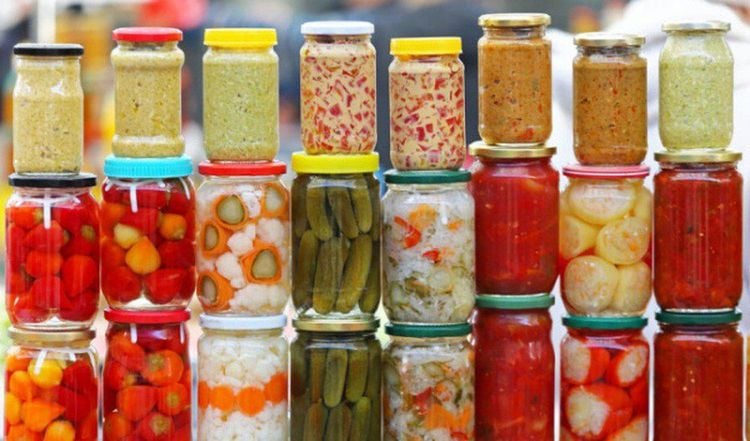
Bảo quản thực phẩm bằng cách ngâm chua
2.2. Modern methods of food preservation 2.2.1. Canning One of the most common methods of preserving food is canning. Canned foods have a significantly extended shelf life but only if they are done properly. You must follow a proven canning process to increase the shelf life and safety of your food. If canned incorrectly, foods containing C.botulinum can produce a toxin that causes botulism - a rare but potentially life-threatening condition.
The basic principle of canning is that food is pasteurized, usually by heating and then in an airtight container. In the absence of air, no new pathogens can enter the pasteurized food. In most canning operations, the packaged food is first prepared, cleaned, peeled, sliced, chopped or otherwise treated and then placed directly into the container. . The container is then placed in hot water or some other medium whose temperature is raised above the boiling point of water for a period of time. This heating process achieves two goals at once. First, destroy the majority of pathogens that may be present in the container. Second, expel most of the air above the food in the can. The box is then closed. In the home canning process, one way to seal a can (usually glass) is to place a layer of molten paraffin directly on top of the food. As the paraffin cools, it forms a solid seal on top of the food. In place of or in addition to the paraffin washers, the container is sealed with a metal screw head containing a rubber gasket. Just like home canning, the process of preserving food in metal containers is similar. Food is prepared and pasteurized in empty containers. The prepared food is then put into sterile metal cans, the filled cans are heated to a sterilized temperature, then the cans are sealed and sterilized using modern machines
2.2.2. Vacuum sealing Similar to canning, vacuuming also deprives bacteria of oxygen by using a vacuum to suck up almost all of the air around the surface of the food, so that the food will be preserved for longer. with their usual lifespan. Although the storage time is not as long as canning, vacuum sealing still lasts much longer than keeping food in the refrigerator.
Vacuum is chosen by many housewives and preserves food for a long time without adding any other ingredients such as canning. This preserves the color, flavor and texture of the food, which is very important with the rare meats you plan to cook. In the absence of air, vacuum-packed food retains moisture, helping to ensure optimal food quality.
You can vacuum many foods but should avoid soft cheeses, mushrooms, cabbage, broccoli. These foods produce gas that expands the pouch and leads to spoilage.
2.2.3. Chemicals, Aseptic Packaging and Irradiation Chemicals are now commonly added to foods to prevent spoilage. Of the dozens of chemical additives available, all are designed to kill or slow the growth of pathogens or to prevent or slow down the chemical reactions that lead to food oxidation. .
Some familiar examples include benzoic acid, sorbic acid, and sulfur dioxide. Antioxidants like BHA (butylated hydroxyanisole) and ascorbic acid (vitamin C) prevent compounds in foods from combining with oxygen to create inedible changes.
Aseptic packaging is a relatively new way to keep food from spoiling. Food products are pasteurized and then packaged in sterilized containers. Sterile packages, which include plastic, aluminum foil and paper, are lighter and cheaper than the traditional metal and glass containers used for canning. Aseptically prepared foods are also pasteurized much faster, so they taste better too. Aseptic packaging was marketed in 1981. However, controversy has developed over the number of disposable containers produced by this method.

Một số loại hóa chất được cấp phép sử dụng trong bảo quản thực phẩm
Food irradiation uses low doses of radiation to kill microorganisms in food and prolong the time that food can be safely sold and eaten. Strawberries that are treated with irradiation can last for up to two weeks, compared with those that are not treated for only 1 week. This process is still controversial and is a relatively new process among food preservation techniques.
Good food preservation helps us save time and have the opportunity to enjoy many delicious dishes. However, when preserving food, it needs to be done properly so that the food is fresh and not lost in terms of nutritional value.
Please dial HOTLINE for more information or register for an appointment HERE. Download MyVinmec app to make appointments faster and to manage your bookings easily.
Reference source: highspeedtraining.co.uk - scienceclarified.com - encyclopedia.com



